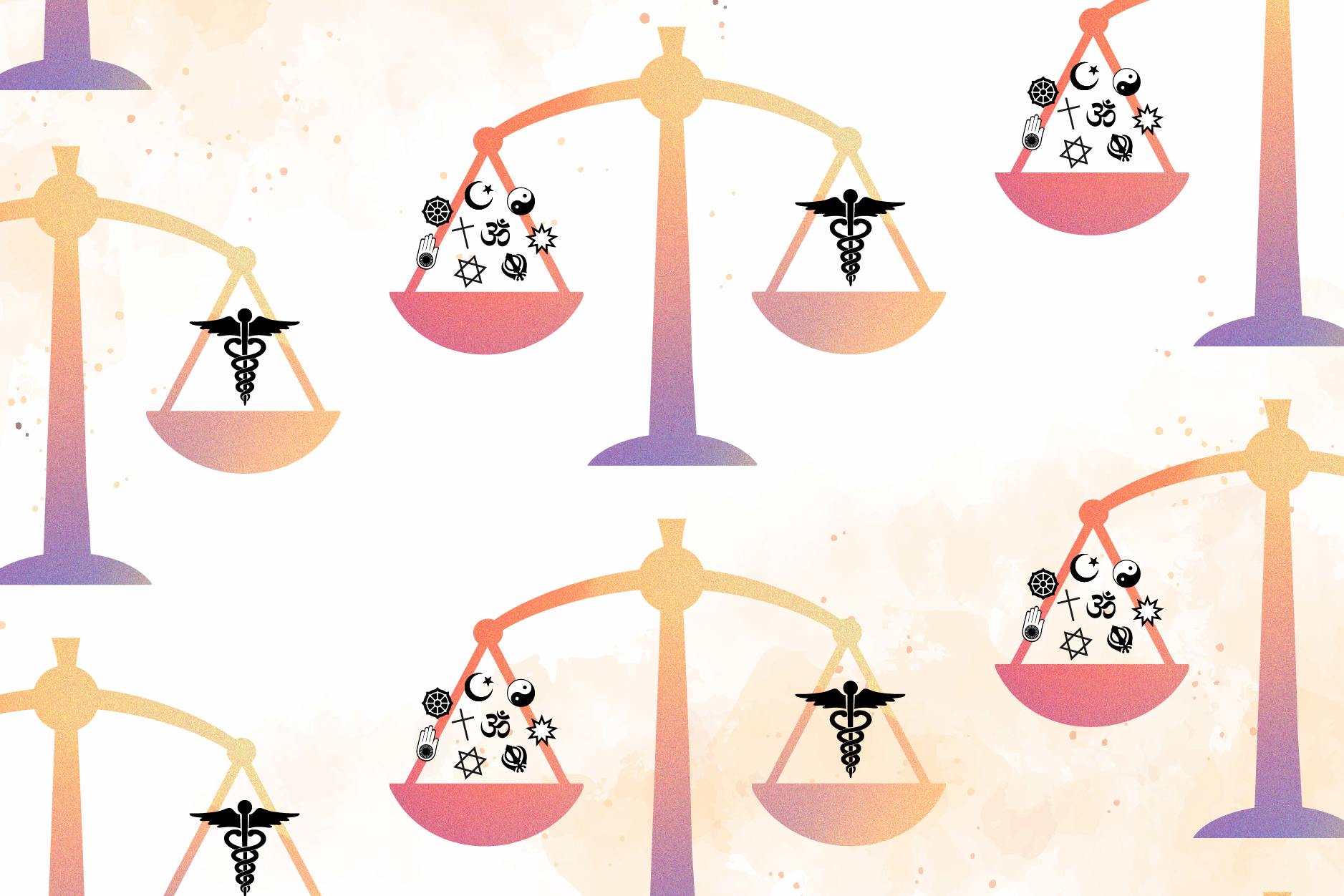I CARE Model

To appropriately address each type of conscience objection, we offer the I CARE model:
- I – INTROSPECTION – Regularly engage in personal and professional self-reflection to
examine your attitudes, beliefs, and potential biases (i.e., take
your own pulse). This is a helpful and necessary first step toward
providing more relationship-centered care for patients and families. Religious beliefs and moral values can change over time, so it is important to reflect on your conscience at least annually. - C – CAUSE – Recognize the cause of your objection(s).
- A – Determine the appropriate ACTION(S). Possible actions include:
- Accommodate
- If a health care provider’s objection to a patient’s and/or family’s wishes is based on personal preference, a good faith effort should be made to accommodate the patient’s request.
- Compromise
- In some instances, a compromise can be reached that accommodates the patient’s/family’s request without violating the health care provider’s moral or religious concerns.
- Inform/Educate
- When starting a new position, inform your supervisor of any conscience objections you have. Consider your role, the scope of your practice, and any ethical challenges you are likely to encounter.
- If you have a patient who requests or needs medical treatment to which you object, give them and/or their family the opportunity to educate you on any religious or cultural beliefs and/or practices shaping their decision.
- In some cases, providers may choose to help patients and families understand their objection, though they are under no legal obligation to do so.
- Consult
- Consult with your supervisor(s) for guidance. In addition, bring pastoral care into the conversation and, if appropriate, the hospital ethics committee to provide support and guidance. This can be helpful for both patient and provider.
- Accommodate
- R – RESPOND to the patient respectfully. After completing one or more of the above actions, tell the patient what course of action you will take.
- Refuse
- Respectfully communicate to the patient and/or family that you are not able to provide the medical care that they are seeking, or that their request cannot be accommodated.
- You may wish to reference one or more of the above actions in your response/refusal.
- Some states and health care institutions require providers who have a conscience objection to inform their patients of their objections. Ask your employer about your facility’s institutional policy.
- Refuse
- E – ENSURE your patient receives the care they need.
- If you are willing and able, refer the patient or transfer care to another provider, as this supports continuity of care.
- Refer to another provider
- Definition: A formal recommendation made by one health care professional to another, or the act of sending a patient from one health care provider to another for one or more health care services.
- Referrals are initiated by the provider.
- Transfer care
- Definition: A transfer of care occurs when one physician turns over responsibility for the comprehensive care of a patient to another physician.
- Transferring care to another provider is often initiated by the patient.
- While it is appropriate to transfer care to another willing, qualified provider, providers exercising their right to conscientiously refuse a particular treatment or procedure are not legally obligated to initiate a transfer of care. However, if the patient initiates a transfer of care, the provider may not interfere with this process.
- Refer to another provider
- Key distinction – a referral is for a particular service whereas a transfer of care is handing off a patient to a new provider for comprehensive care.
- Note: U.S. Catholic health care facilities are subject to the Ethical and Religious Directives (ERDs) put forth by the United States Conference of Catholic Bishops. Directive 73 of the ERDs prevents providers from providing a referral for services that are not allowed under the ERDs (e.g., contraception).
- If you are willing and able, refer the patient or transfer care to another provider, as this supports continuity of care.
Further reading:
- Which Legal Approaches Help Limit Harms to Patients from Clinicians’ Conscience-Based Refusals – AMA Journal of Ethics
- Transfer of Care vs. Referral: A Crucial Moral Distinction – The National Catholic Bioethics Center
